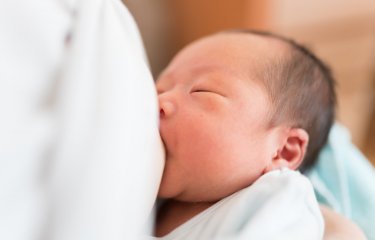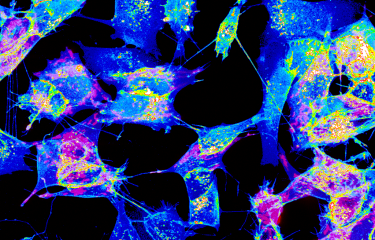Hospital-acquired infections caused by Clostridioides difficile represent a major health threat. In a recently published study, scientists describe the molecular mechanisms that enable the bacteria to survive, adapt and develop in the gut. They demonstrate that the c-di-AMP molecule plays a central role in C. difficile's internal regulation mechanisms, promoting antimicrobial resistance.
Hospital-acquired infections are a major public health problem. Many such infections, contracted in hospitals and long-term care facilities, are caused by Clostridioides difficile (C. difficile), an enteropathogenic bacterium that can lead to severe diarrhea. These digestive symptoms generally occur following antibiotic therapy, which weakens the host's gut flora and facilitates colonization by C. difficile. The processes used by the bacteria to adapt to the human gut environment are still only partly known, so it is crucial to establish a more detailed understanding of the underlying mechanisms.
Regulatory role played by the c-di-AMP molecule
Research by the Institut Pasteur's Pathogenesis of Bacterial Anaerobes laboratory, which is exploring the development of therapeutic strategies to tackle C. difficile, had already shown that gut microbiota composition modulates the severity of C. difficile infections. In a study published recently in the journal Science Signaling, the same scientists and their partners (see "Source" below) demonstrate the central regulatory role played by a molecule called cyclic diadenosine monophosphate (c-di-AMP). "The production and degradation of this dinucleotide are essential during the different phases of C. difficile growth, environmental adaptation and infection," explains laboratory head Bruno Dupuy.
Multiple reactions in the bacteria, from antimicrobial resistance to biofilm formation
The scientists demonstrated the involvement of c-di-AMP in several chains of reactions in C. difficile bacteria. c-di-AMP production is necessary for C. difficile growth and survival, since it directly controls the uptake of potassium (K+) by modulating the activity or expression of potassium transport systems.
The scientists also established a link between c-di-AMP and bacterial resistance to antibiotics. If the antibiotics used target the bacterial cell wall, the presence of c-di-AMP promotes cell wall stability. A link was also established between the presence of the dinucleotide and the ability of C. difficile to form biofilms, which facilitate persistence of the pathogen in the body.
Conversely, high intracellular concentrations of c-di-AMP inhibit bacterial adaptation to osmotic stress. Finally, exposure of C. difficile to bile salts promotes c-di-AMP degradation, which subsequently increases bacterial resistance to bile salts.
Taken together, "these mechanisms describe complex molecular regulations in which c-di-AMP plays a central role," sums up Bruno Dupuy. The molecules that interact with c-di-AMP therefore represent potential new therapeutic targets, opening up new avenues for research.
This study comes under the Antimicrobial resistance priority scientific area in the Institut Pasteur's 2019-2023 Strategic Plan.
Source :
c-di-AMP signaling is required for bile salt resistance, osmotolerance, and long-term host colonization by Clostridioides difficile, Science Signaling, September 6, 2022
DOI: 10.1126/scisignal.abn8171
Marine Oberkampf1†, Audrey Hamiot1‡†, Pamela Altamirano-Silva2, Paula Bellés-Sancho1§, Yannick D. N. Tremblay1¶, Nicholas DiBenedetto3, Roland Seifert4, Olga Soutourina5, Lynn Bry3,6, Bruno Dupuy1* and Johann Peltier1,5*
- Institut Pasteur, Université Paris Cité, UMR-CNRS 6047, Pathogenesis of Bacterial Anaerobes Laboratory, F-75015 Paris, France
- Centro de Investigación en Enfermedades Tropicales, Facultad de Microbiología, Universidad de Costa Rica, San José, Costa Rica
- Massachusetts Host-Microbiome Center, Dept. Pathology, Brigham & Women’s Hospital, Harvard Medical School, Boston, MA
- Institute of Pharmacology & Research Core Unit Metabolomics, Hannover Medical School, Hannover, Germany
- Université Paris-Saclay, CEA, CNRS, Institute for Integrative Biology of the Cell (I2BC), 91198, Gif-sur-Yvette, France
- Clinical Microbiology Laboratory, Department of Pathology, Brigham & Women’s Hospital, Boston, MA
† These authors contributed equally.









